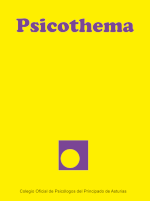Abstract
Background: The risk of child grooming has spread exponentially with the massive access of adolescents to social networks and the internet. The aim of the study was to examine the personal factors (body self-esteem and disinhibition) and erotic-sexual factors (sexual initiation strategies and erotic-pornographic sexting) that predict grooming. Method: The sample was comprised of 1,200 adolescents aged between 12 and 16 years (M = 14.54, SD = 1.17; 50.83% girls). A cross-sectional design with self-report data was used and structural equation modeling (SEM) with mediation analysis was performed. Results: The results indicated two paths explaining child grooming: 1) physical attractiveness and disinhibition are indirectly associated with grooming through erotic sexting and direct sexual initiation strategies; both of which partially mediate this relationship; 2) disinhibited behavior has an indirect impact on grooming; pornographic sexting and coercive strategies acting as mediators. The semi-partial mediation model explains 54% of the variance of grooming. Conclusions: These findings highlight the urgent need to implement prevention programs considering these attitudes and behaviors that function as precursors of victimization and the risk of falling into pedophile networks.Downloads
Download data is not yet available.
